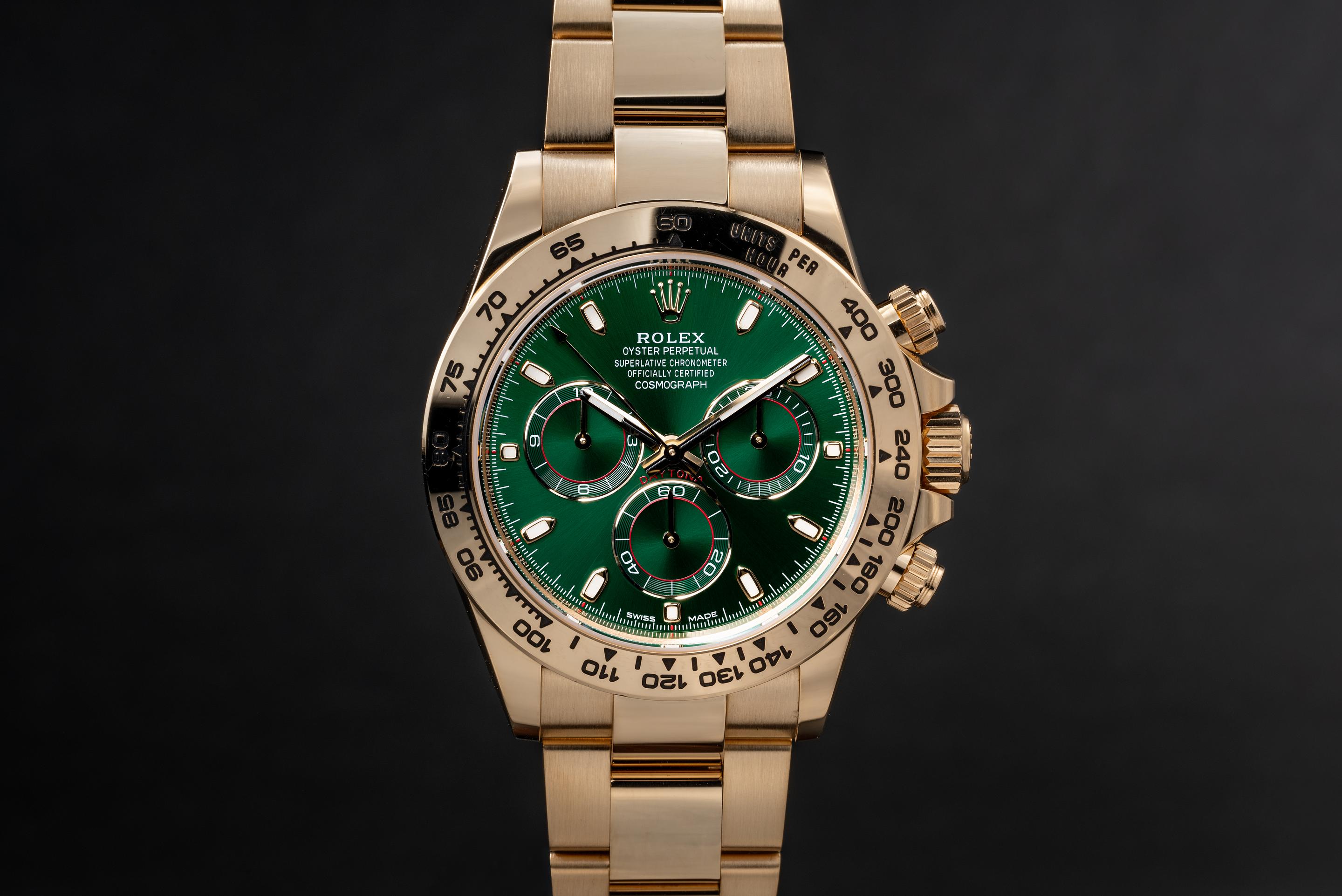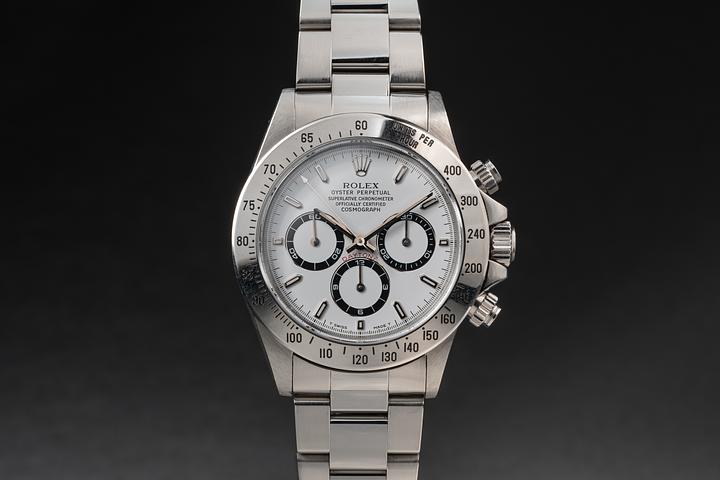John Mayer Daytona Watch: The Gold and Green Grail Rolex

The John Mayer Daytona: A Collector’s Dream and a Nod to Swiss Watchmaking Excellence
There’s a certain energy that hovers around a timepiece when it transcends function and edges into cultural icon status. The Rolex Daytona already lived on that plateau, but when John Mayer—a known watch enthusiast with a highly influential presence in horology circles—threw focus on a specific Daytona reference, things shifted. Markets reacted. Enthusiasts paid closer attention. Whether you’re a seasoned collector or casually curious, the story surrounding the John Mayer Daytona is one that intersects passion, precision, and the Swiss tradition of excellence.
What Is the John Mayer Daytona?
Let’s start here because if you’ve been hearing whispers about “John Mayer’s Daytona,” you should know it’s not a collaboration or signature model. It’s a nickname, much like how certain Rolex GMT-Master IIs have been lovingly labeled “Pepsi” or “Batman.” The John Mayer Daytona refers specifically to the Rolex Cosmograph Daytona reference 116508—yellow gold with a vivid green dial. An unusual and bold combination? Definitely. But when Mayer featured it in a 2019 Talking Watches segment by Hodinkee, he unknowingly—or maybe completely intentionally—set it on a course for icon status.
The Rolex Daytona 116508: Color, Class, and Swiss Craftsmanship
Introduced at Baselworld 2016, the Rolex Daytona 116508 didn’t exactly make headlines when it hit boutiques. A full yellow gold case with a matching Oyster bracelet and a striking green sunburst dial—sleek, undeniably bold, and quietly eccentric. Before Mayer cosigned it, the watch was objectively underappreciated. Perhaps the green threw people off. It was rare in Rolex’s catalog, and rarer still to find paired with a heavy gold case.
But fast forward post-Mayer feature, and now…good luck finding one without committing to a waitlist or drawing deep into the secondary market. Prices have surged, driven less by marketing and more by enthusiast appeal and Mayer’s recognition of the reference’s unique place in Rolex’s modern catalog. And what really makes this Daytona hum is what underlies it: Rolex’s Caliber 4130 movement—manufactured entirely in-house in Switzerland, lauded for its durability, accuracy, and long service intervals. Swiss watchmaking is about trust, and the 116508 is built on that same principle.
A Brief History of the Rolex Daytona
Now let me pause and rewind for just a second. The Cosmograph Daytona, launched in 1963, wasn’t always the darling of the Rolex family. It was created for professional racing drivers—hence the built-in chronograph and tachymeter scale. The early references, particularly the “Paul Newman” variants, were slow movers in their early years. But as with many things vintage and well-crafted, appreciation came with time.
The Swiss origin of the Daytona is no footnote. It embodies the same DNA that powers the most renowned timepieces from Geneva and beyond: meticulous hand-assembly, pressure-tested tolerances, and innovation baked into tradition. The Caliber 4130 movement, introduced in 2000, marked Rolex's shift toward vertical integration, bringing the Daytona’s heart squarely into Rolex's Geneva headquarters. Over the decades, the watch moved from racetracks to red carpets, evolving from tool to status symbol, and now, collector cornerstone—especially when names like Mayer get involved.
John Mayer: Watch Collector, Cultural Curator
It's worth diving into why John Mayer's opinions on watches carry so much weight. This is not a case of celebrity trend-chasing. Mayer is a genuine watch savant. His collection spans vintage Pateks, indie stalwarts, and of course, a healthy rotation of Rolex references. His clarity in describing why a watch appeals to him—typically grounded in design nuance and historical curiosity—has helped guide the preferences of a younger, savvier collector demographic.
So when Mayer sat down and pulled out the green-dial 116508, praising its unexpected dial color, perfect symmetry, and overlooked uniqueness, it felt less like a sales pitch and more like a nudge to wake up and recognize a sleeper. No fluff, no marketing jargon. Just a collector pointing at something special. Within months, demand spiked. Rolex boutiques heard the buzz, and suddenly the “green dial yellow gold Daytona” was getting nicknames…and Mayer’s name stuck.
Swiss Watch Industry: Precision Engines of Desire
Look, the Swiss watch industry didn’t become a global icon by accident. It's the meticulous attention to tolerances, the ceremonial assembly, and the unwavering dedication to craftsmanship over centuries. That’s the crucible in which the 116508 was made. Rolex remains something of a control freak in the best way. From forging their own gold alloys in-house to subjecting every case to extreme pressure and temperature cycles—Rolex exemplifies Swiss quality control.
And although Rolex doesn't innovate at breakneck speed, when they do, it sticks. The Daytona line specifically has seen improvements in power reserve, anti-magnetic resistance, and efficiency—all while maintaining that classic, wear-anywhere appeal. The John Mayer Daytona fits neatly into this evolution. It speaks to a lineage that values performance, but it also dares to break visual conventions. Swiss watchmaking, generally introverted in its expression, found in the John Mayer Daytona a little moment of expressive flair—and many collectors were ready for it.
Final Thoughts: Is the John Mayer Daytona Worth the Hype?
Short answer? Yes—well, mostly. If you're someone who values watches as art, engineering, and history in one impossibly cool wrist statement, the 116508 is a compelling choice. Its desirability isn’t superficial. It rests on solid Rolex DNA, a unique but versatile aesthetic, and a cultural exclamation point thanks to John Mayer’s endorsement. It’s one of those rare Swiss watches that didn’t ask for the spotlight, but claimed it anyway.
Of course, prices today are elevated—secondary market premiums climb depending on condition, original box and papers, and seller hype. But Rolex rarely repeats iconic dial-and-case combos, and while we can't know the future, the Mayer-effect has already cemented the 116508 into Rolex lore.
In a world defined by endless options and trends that shift faster than we can scroll, the John Mayer Daytona offers a sort of grounded luxury. It’s not just about who wore it first. It’s about understanding why it matters now—and cherishing that across time zones and generations. And if you happen to be waiting on the list for one…well, patience is very much part of the Swiss watch tradition too.




